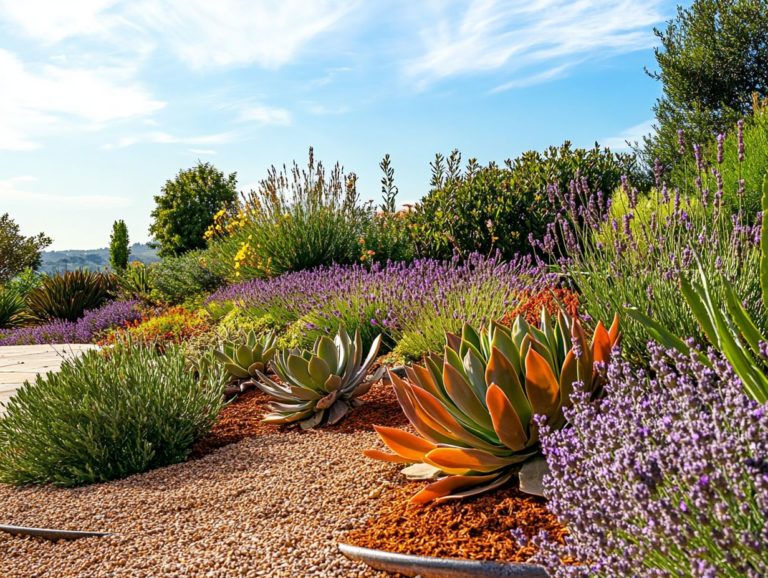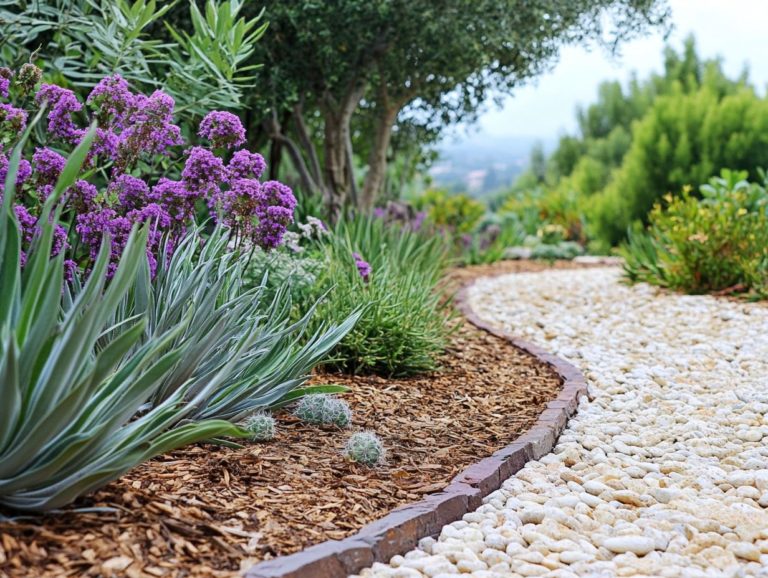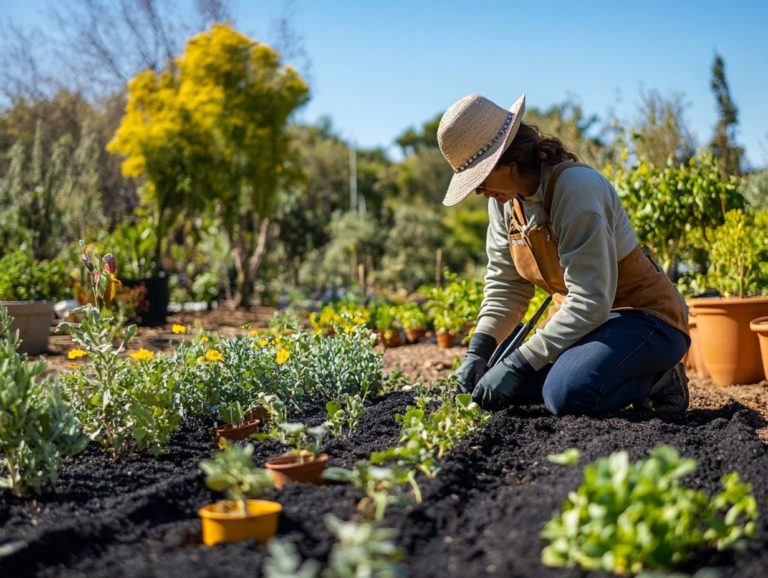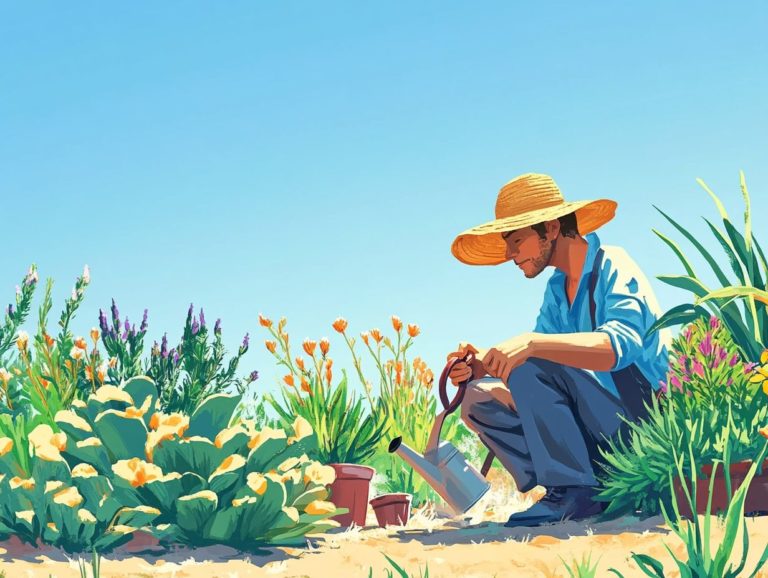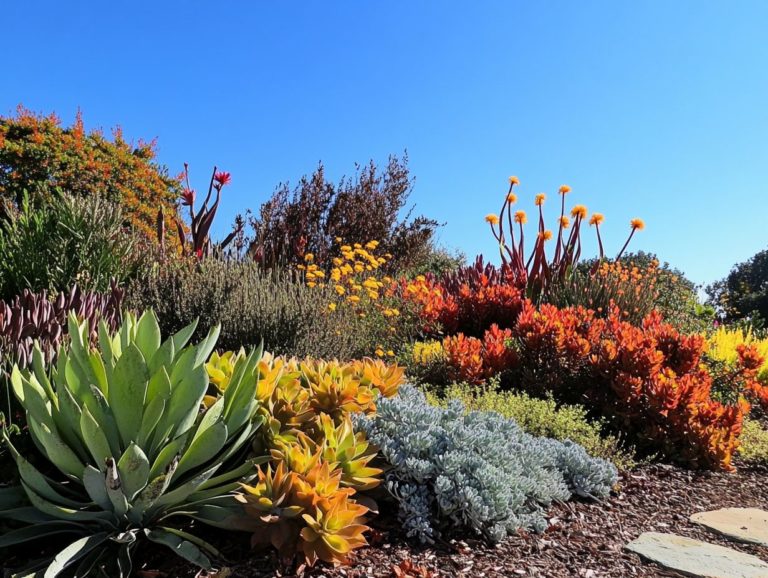How to Create a Drought-Tolerant Garden?
As climate change escalates and water resources dwindle, designing a drought-tolerant garden plan transforms from a mere trend into an essential practice.
This guide will equip you with the fundamentals required to create and maintain a flourishing drought-tolerant garden, even under arid conditions. Uncover what it means to cultivate a drought-tolerant garden, explore the myriad benefits it offers, and learn how to choose the right plants and effective watering techniques.
With actionable strategies for water conservation and innovative gardening tips, you re poised to cultivate your own sustainable oasis.
Contents
Key Takeaways:
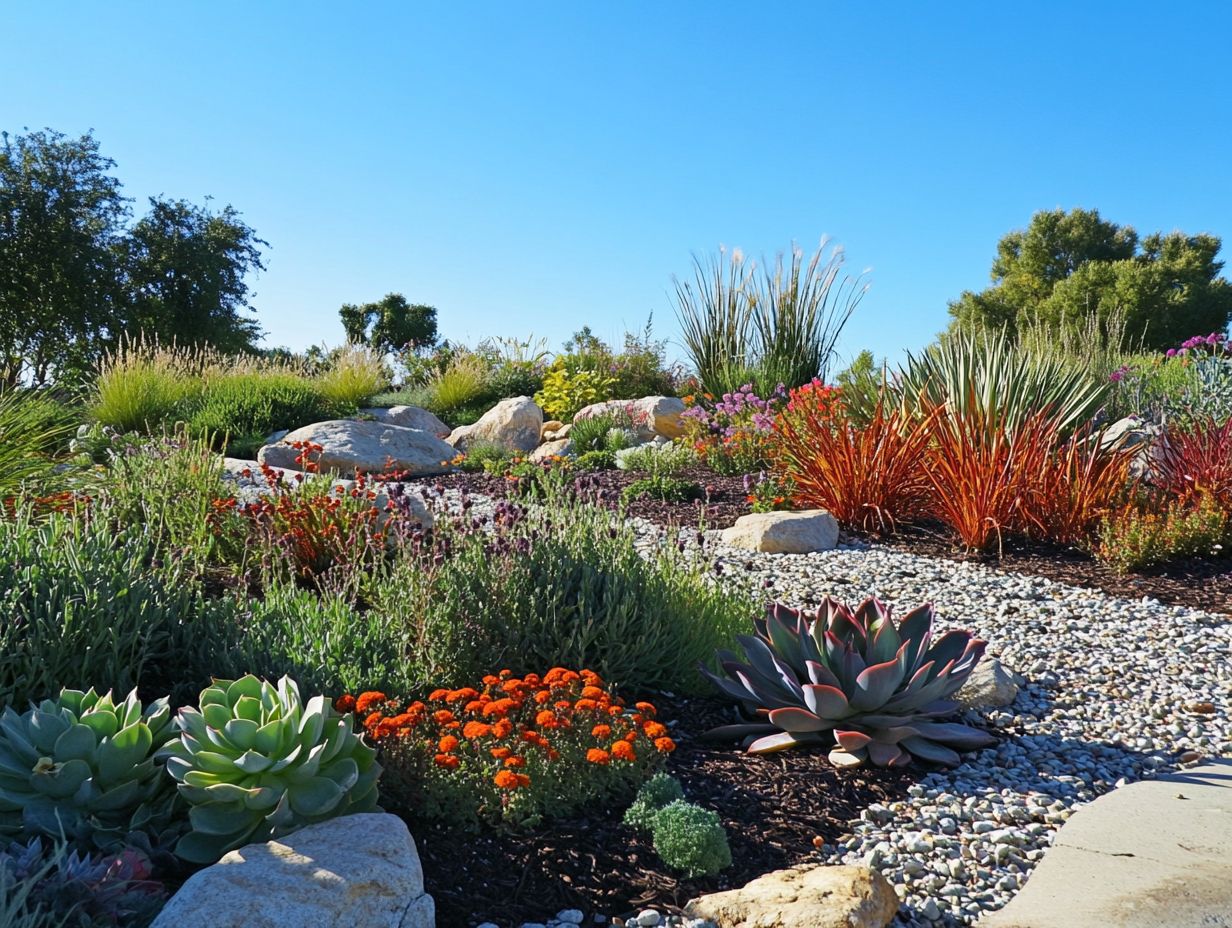
- Choose drought-resistant plants that can thrive in hot and dry conditions for a low-maintenance garden.
- Implement effective watering techniques like drip irrigation and mulching to conserve water and reduce water usage.
- Maintain your garden by checking for pests and diseases, removing weeds, and providing proper care to ensure its long-term success.
Understanding Drought-Tolerant Gardens
Grasping the concept of drought-tolerant gardens is crucial in today’s climate-conscious world, especially amidst discussions of climate change. For those interested, understanding best practices for drought-resistant gardening can help create landscapes designed to flourish with minimal water by using sustainable landscaping practices that prioritize biodiversity, which means having a variety of different plants and animals, and efficient water management.
By integrating native plants like California poppies and employing xeriscaping a landscaping method that reduces the need for irrigation you can create beautiful outdoor spaces that demand less maintenance while delivering both aesthetic appeal and environmental advantages.
Experts such as Viveka Neveln and Peter Krumhardt from BHG highlight the significance of meticulous landscape architecture in developing these gardens, ensuring they blend beauty with functionality seamlessly.
What is a Drought-Tolerant Garden?
Imagine creating a drought-tolerant garden, a thoughtfully designed outdoor oasis that thrives on minimal water, enhanced by a beautiful water feature. By selecting native plants adapted to your local climate and soil conditions, you can learn how to design a drought-tolerant garden that flourishes effortlessly.
These gardens often showcase a rich variety of resilient flora, including plants like Datura meteloides, succulents, ornamental grasses, and hardy perennials that require little irrigation. To further improve your garden’s sustainability, consider learning how to enhance drought resistance in existing gardens. Proper soil drainage is essential to prevent waterlogging, which can harm even the toughest drought-resistant plants.
Incorporating mulch and compost is another smart move to retain moisture and regulate temperature, enhancing the sustainability of your garden. The result is a low-maintenance landscape that conserves water, reduces the need for chemical fertilizers and pesticides, and fosters a healthier environment for both your plants and local wildlife while promoting biodiversity.
Benefits of Having a Drought-Tolerant Garden
Creating a drought-tolerant garden offers exciting benefits you won t want to miss!
- Environmental benefits that help combat climate change.
- Considerable cost savings on water bills and maintenance.
- An enriched biodiversity that enhances the beauty of your landscape.
Act now to protect our precious water resources! Get started on your own sustainable oasis today!
Environmental and Cost Benefits
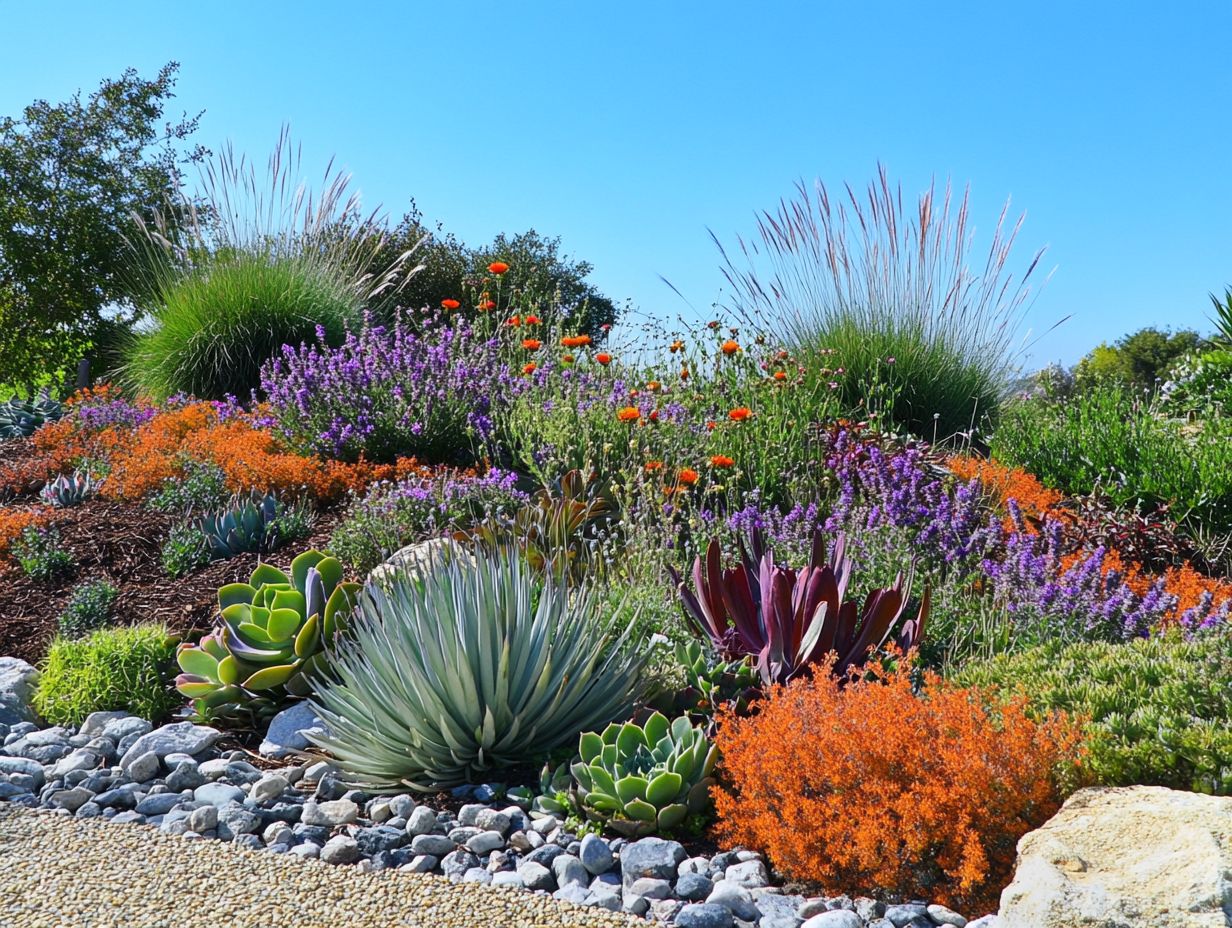
Drought-tolerant gardens offer a wealth of environmental benefits. They promote water conservation, resulting in significant cost savings for your household and encouraging sustainable landscaping practices.
By cultivating landscapes that prioritize native and drought-resistant plants, such as Lavandula angustifolia and Russian sage, you minimize water consumption. This thoughtful approach also reduces runoff, allowing precious rainwater to seep into the ground instead of washing away. It fosters local biodiversity and provides vital habitats for native wildlife and pollinators, strengthening ecosystems.
Imagine how much you could save with lower water bills from reduced watering needs! This choice is not just environmentally friendly but also financially savvy, while complying with local water conservation regulations. With less maintenance, you can enjoy a stunning, sustainable garden while shrinking your environmental footprint and contributing to a healthier planet.
Designing a Drought-Tolerant Garden
Designing a drought-tolerant garden demands careful planning. It involves the thoughtful selection of suitable drought-resistant plants, along with learning how to create a sustainable drought garden. You’ll also want to incorporate efficient irrigation systems and innovative water-saving strategies to maximize sustainability in your outdoor space.
Choosing Drought-Resistant Plants
Choosing drought-resistant plants is essential for your garden’s success. This means selecting native plants and landscaping options that utilize drought gardening principles that thrive in arid conditions.
By curating a thoughtful plant list, you can create a vibrant landscape that conserves water while providing stunning visual appeal throughout the seasons. For instance, incorporating species like coneflower, with its bright petals and hardy nature, can add a burst of color while attracting beneficial pollinators.
Similarly, Sweet alyssum flourishes in dry soil, offering delightful fragrance and impressive resilience. Ornamental grasses can serve as striking focal points, their swaying forms adding movement and texture to your garden.
With these selections, you ensure that your garden remains lush and lively with minimal upkeep, beautifully showcasing the art of sustainable gardening.
Effective Watering Techniques
Implementing effective watering techniques is crucial for maintaining a drought-tolerant garden. These methods optimize water conservation and enhance soil drainage across varying humidity levels.
Among these techniques, drip irrigation shines for its efficiency. This watering method delivers water directly to the roots of your plants while minimizing evaporation and runoff. It ensures a controlled and consistent moisture level in the soil, keeping your plants happy and healthy.
Incorporating rain gardens into your landscape can also be a game-changer. They capture and utilize stormwater runoff, allowing native plants to flourish while easing the burden on municipal water supplies.
It’s crucial to understand local humidity conditions right away, as they influence evaporation rates and soil moisture retention. By embracing these practices, you cultivate a thriving garden and contribute to sustainable water management.
Maintaining a Drought-Tolerant Garden
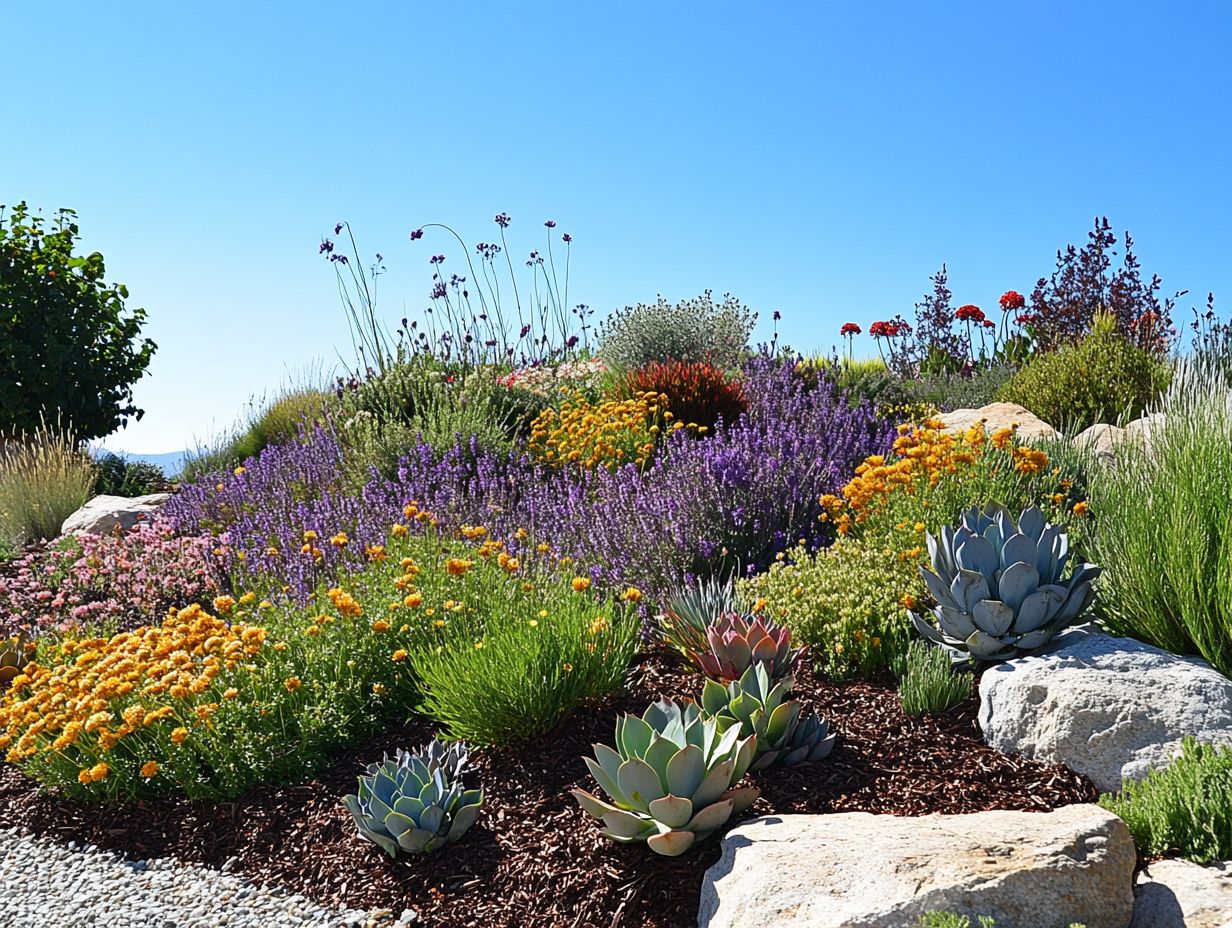
To maintain a drought-tolerant garden, you must engage in careful management and attentive practices that align with local humidity levels. This approach ensures that your plants flourish in low-water conditions while significantly reducing the need for extensive upkeep. For more detailed strategies, check out how to create a wildlife-friendly drought garden.
Start planning your drought-tolerant garden today for a beautiful, sustainable future!
Proper Care and Maintenance
Proper care and maintenance are essential for ensuring the longevity of your drought-tolerant garden.
These practices enhance soil health, support strong root systems, and promote plant vitality.
By incorporating techniques such as mulching, composting, and making seasonal changes, including adjusting irrigation systems, you not only provide vital nutrients but also conserve moisture in the soil, reducing the need for frequent watering.
Using organic mulch allows you to minimize weed growth and create a more stable environment around your plants, enabling them to thrive even in challenging weather conditions.
Composting enriches your soil with beneficial microbes and organic matter, promoting strong root systems that can withstand the test of time.
Making timely seasonal adjustments, like tweaking your watering schedule, ensures your garden thrives year-round.
Additional Tips and Tricks
Use these creative tips and tricks to elevate your drought-tolerant garden.
By embracing innovative water-saving strategies and insightful gardening techniques, you can maximize both sustainability and aesthetic appeal, transforming your outdoor space into a flourishing oasis.
Conserving Water in the Garden
Conserving water in your garden is essential, and implementing effective water-saving strategies like rain gardens and efficient irrigation systems can significantly cut down on your water usage.
By incorporating these methods, you ll find that selecting drought-tolerant plants can greatly reduce water requirements while still enhancing the aesthetic appeal of your garden.
Native species, for example, flourish in local conditions, making them a sustainable and low-maintenance choice.
By utilizing rainwater harvesting techniques, such as using rain barrels or creating rain gardens, you can capture and reuse valuable rainfall to nourish your plants.
Combining these strategies not only ensures a lush and thriving garden but also promotes using resources wisely, benefiting the ecosystem and lowering your overall consumption.
Frequently Asked Questions
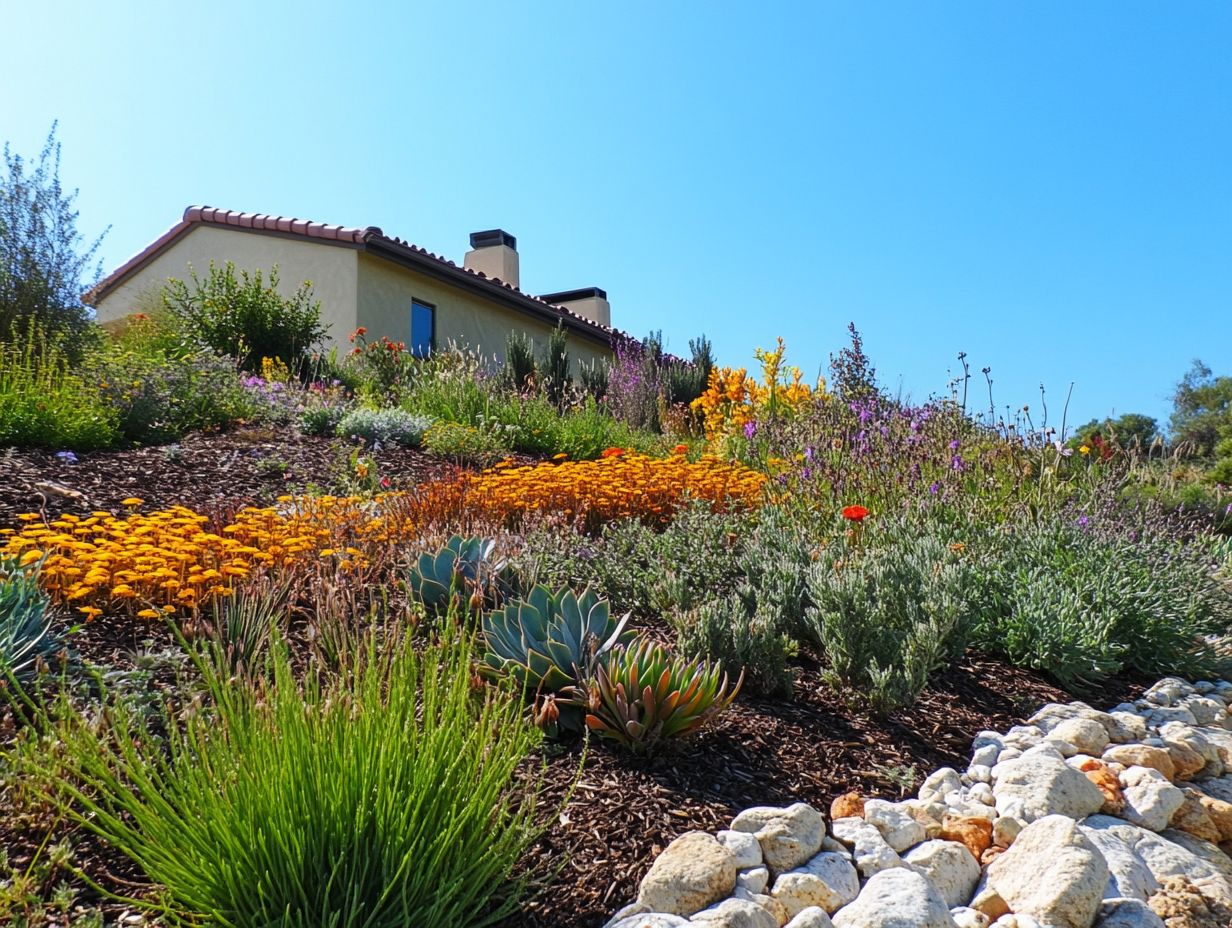
What is a drought-tolerant garden?
A drought-tolerant garden is a type of garden designed to withstand long periods of drought without requiring frequent watering. To learn more about creating such a garden, check out this guide on how to design a drought-resistant landscape.
It typically includes plants that are able to survive with minimal water and can thrive in dry conditions.
Why should I create a drought-tolerant garden?
Creating a drought-tolerant garden helps conserve water and reduces the need for constant watering, which can save time and money. To learn more, check out what are the essentials for starting a drought garden.
Additionally, these gardens are low-maintenance and can still look beautiful even in times of drought.
How do I choose the right plants for a drought-tolerant garden?
When selecting plants for a drought-tolerant garden, look for species that are native to your region and are known to be drought-tolerant.
Succulents, cacti, and other plants with thick leaves or stems are also good choices as they store water and can survive in dry conditions.
How do I prepare my soil for a drought-tolerant garden?
Before planting, it’s important to prepare your soil by adding organic matter such as compost or mulch.
This helps improve soil structure, retain moisture, and provide nutrients for your plants.
It’s also a good idea to test your soil’s pH level and make any necessary adjustments.
Can I have a colorful drought-tolerant garden?
Absolutely! Contrary to popular belief, drought-tolerant gardens can be just as bright and colorful as traditional gardens.
There are many drought-resistant plants that produce vibrant flowers, such as lavender, yarrow, and coneflowers.
Just make sure to choose plants that are suitable for your climate.
How do I maintain a drought-tolerant garden?
Once established, drought-tolerant gardens are low-maintenance.
However, they still require some upkeep, such as occasional weeding and pruning.
It’s also important to monitor the moisture levels and water as needed during dry spells.
Adding a layer of mulch can also help retain moisture and prevent weeds from growing.

